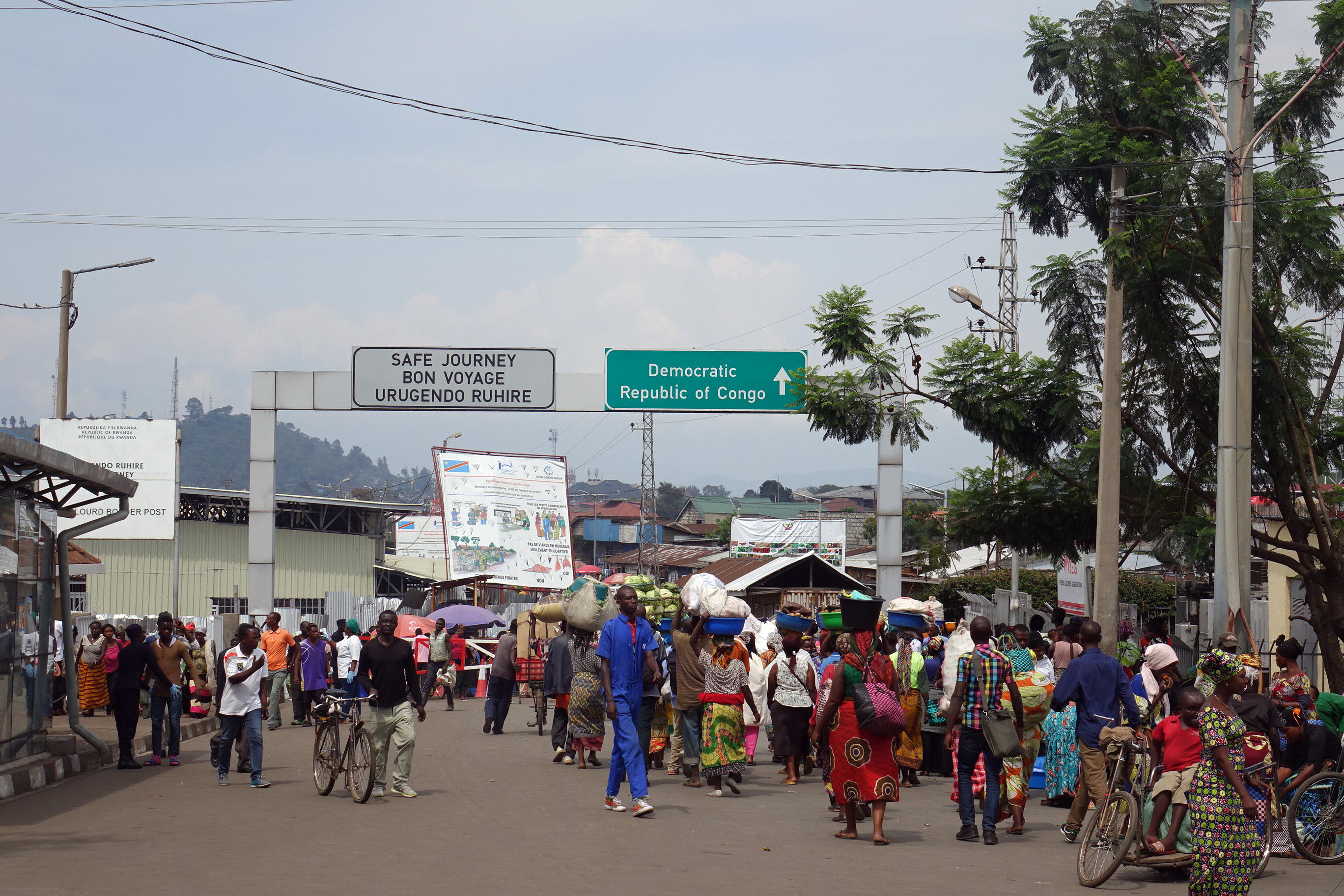At the Petite Barrière border crossing between Rwanda and the Democratic Republic of Congo, there is a lively cross-border trade exchange.
Copyright© Violeta Gonzalez/EIF, via flickr, CC BY-NC-ND 2.0
Economic situation Dynamic growth
The government’s stated aim is to improve living conditions for all through economic growth. According to its Second National Strategy for Transformation (NST2 (External link)), this is to be achieved through an average increase of 9.3 per cent per annum in Rwanda’s gross domestic product in the period up to 2029. The government sees agriculture, renewable energies, the processing industries, mining and tourism as important sectors for economic development.
The government is very eager to attract foreign investors in particular. From 2015 to 2019, Rwanda’s economy grew at a rate of between four and 9.5 per cent per annum. Then, as a result of the COVID-19 pandemic, the economy shrank by 3.4 per cent in 2020. Sectors that were particularly hard hit by the global economic crisis and by local measures to counter the pandemic were tourism, trade, construction and industrial production – all drivers of growth in recent years. Even agriculture suffered in 2020, partly because it is closely interlinked with other economic sectors, partly because heavy rainfall led to harvest losses.
In 2021, the Rwandan economy expanded significantly (a plus of 10.9 per cent). In 2023, the growth rate was 8.2 per cent. In the first half of 2024, gross domestic product rose by 9.7 per cent. The World Bank expects average growth of 7.7 per cent for 2025 and 2026.
Obstacles
President Kagame’s governing party plays a dominant role in some of the country’s major economic activities.
Difficult geographic and structural conditions hamper economic development. Rwanda is a small, extremely densely populated mountainous country without access to the sea. Compared with other countries in the region, companies there face high energy and transport costs. There is a lack of skilled staff and of well-developed infrastructure. There is a particular need for improvement in the area of energy supply. Roughly half the population does not yet have access to electricity.
Via its regional programmes, Germany is helping to improve energy supply through the installation of transmission lines between Rwanda, Burundi and the Democratic Republic of the Congo. The construction of hydropower stations and solar home systems is also being promoted.
The country’s high population density and growth (2.2 per cent in 2023) are leading to excessive use of its natural resources. By comparison: whereas in Germany the average population density is 240 people per square kilometre, in Rwanda it is 553. There is growing land degradation as a result of the high population density; this then means that less and less farmland is available, which in turn leads to ever more migration to cities and increasing urbanisation. At the same time rural areas, in particular, are increasingly feeling the effects of extreme weather events, such as droughts and heavy rainfall, and of damage caused by erosion.
Development potential
The growth sectors in Rwanda are mainly the construction industry and mining, although tourism is also increasing. The Rwandan government is working hard to stem uncontrolled deforestation and to place remaining forests under protection, not least because of the important role played by tourism in the economy. In addition, the capital city of Kigali has successfully made its mark as an international conference venue with a new conference centre and numerous new hotels.
As at: 05/03/2025
